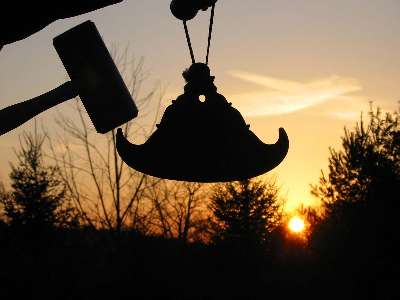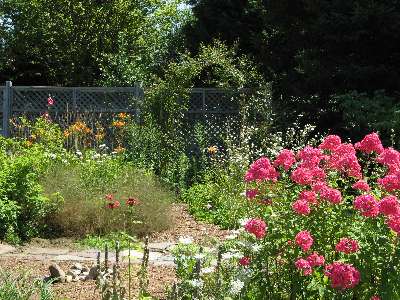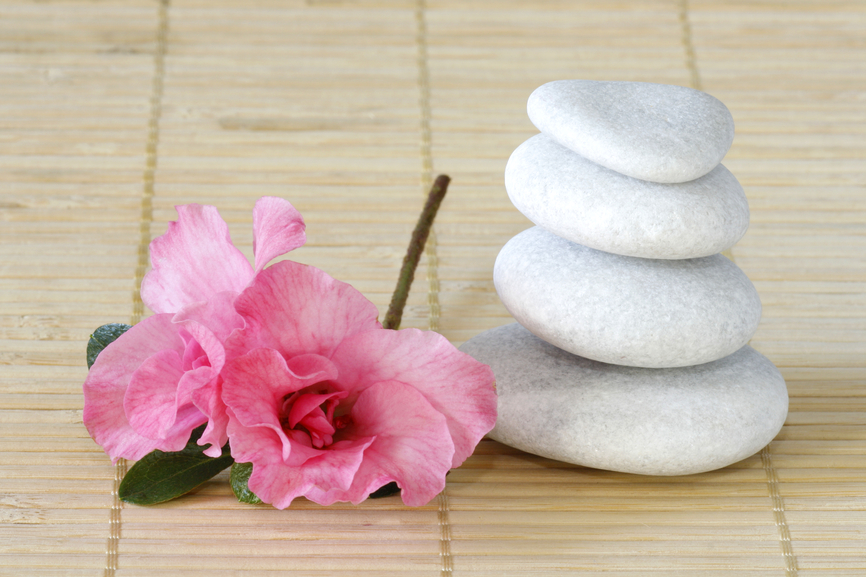A Journey to Panna: My Second Vipassana Retreat
 Recently I attended my second 10-day retreat and vow of Noble Silence at the Dhamma Dhara Vipassana Meditation Center in Shelburne Falls, Massachusetts. When I arrived at the center I was greeted with a flood of memories from my first retreat last year and the incredible spiritual journey I experienced with karmic guru SN Goenka (Goenka-ji).
Recently I attended my second 10-day retreat and vow of Noble Silence at the Dhamma Dhara Vipassana Meditation Center in Shelburne Falls, Massachusetts. When I arrived at the center I was greeted with a flood of memories from my first retreat last year and the incredible spiritual journey I experienced with karmic guru SN Goenka (Goenka-ji).
This year was different because Goenka-ji had given up his body not long after my first Vipassana experience last year. Hearing his booming chant, this year, knowing that he was in another dimension, was priceless. He was very much alive and fully present.
From 4 am to 4:30 am, your alarm clock is a gong banged by volunteers who serve. The meditation starts at 4:30 am–we meet in the meditation hall. The day ends at 9:30 p.m. Lights are out at 10 p.m. There are approximately 10 or 11 hours of sitting meditation in complete silence sandwiched in between. At times we heard chanting, but were forbidden from chanting ourselves.
Each day the true treat was the evening discourses delivered by Goenka-ji.
Before the retreat even starts, you have to adopt a certain code of conduct which included 5 strong precepts of the Vipassana technique:
- The rejection of killing – especially in what we eat
- No lying
- No stealing
- No sex
- No intoxicants.
In other words, the senses are not to be indulged at all. For the first 3 days of the retreat, we practiced anapana meditation. The purpose is to tranquilize the mind before embarking on the Vipassana technique on day 4.
- On Day 4, I meditated alone in a cell within a pagoda — a self-imposed jail. I did not have the big insight that I was hoping for, and yet, that was okay.
- Day 5 was fabulous and my ego, which was dormant, knocked on the door. It wanted to go home, because I thought I had achieved mastery of the technique.
- That big ‘A-ha’ moment arrived during the afternoon of day 6 after mud wrestling with my ego. The concept of non-duality is one that I have known for over a decade, and though I understood it intellectually, it was only on day 6 that I experienced it at the cellular level.
Let me tell you what I mean. For example:
 If you can watch sensations come and go, with equanimity (think of a mosquito bite and your urge to scratch it sooo badly), but you know that it will only make it itch more — so you just observe the sensations and don’t scratch it. Because that itch, too, shall pass.
If you can watch sensations come and go, with equanimity (think of a mosquito bite and your urge to scratch it sooo badly), but you know that it will only make it itch more — so you just observe the sensations and don’t scratch it. Because that itch, too, shall pass.
Similarly with your agitating (or itchy) thoughts, you can watch them come and go, without indulging them and being reactive or explosive. You can simply observe them, without attachment or aversion. They will, like clouds, disappear – sometimes those might be storm clouds!
Sitting in the pagoda then, I realized that nothing, and no one, could ever bother me.
As I continued, the connection between mind and body became more apparent. Buddha said, after years of living close to starvation as an ascetic, that one should take care of one’s body. I began to sense the quantum interaction between my mind and the sensations I was feeling in my physical form. My body may have ached from sitting in meditation for hours at a time, but I was determined to keep going, even as I suffered more and more.
Join me next time to discover what happened after day 6!
Memories of Meditation and Mindfulness
All of man’s difficulties are caused by his inability to sit, quietly, in a room by himself.
–Blaise Pascal
Back in 2005 I was at a Baron Baptiste Power Yoga event in Rhinebeck, New York. During the lunch break, I saw there was another group sharing the venue with us. There were so many of them, and they all ate their lunch in silence! I eventually got to talk with a few of them and I asked what they were doing there. They were attending a Mindfulness Meditation retreat led by a medical doctor named Jon Kabat-Zinn. They recommended that I check out his book Coming to Our Senses: Healing Ourselves and the World through  Mindfulness.
Mindfulness.
I rushed to the bookstore and devoured the book. I later learned that Mr. Kabat-Zinn would be doing a book-signing at the bookstore that evening, and I decided I must go and meet the man. I stood on the line for over an hour, with the book in hand and full of emotion. When I finally got to meet him, even though the line was long, he spent some time with me.
I told him that I practiced yoga but I had trouble with the resting pose. I said “I am just restless, I think I feel like I’m wasting my time. I want to work out, not just sit there.” He listened to me, encouraged me, and personalized my book, writing “May this be the door in,” in addition to the stamp he imprinted on everyone’s books: May your mindfulness practice grow and flower and nourish your life from moment to moment and from day to day. It was just so beautiful. That was back in May, 2005. And that’s when I truly started to meditate.
Be – don’t try to become.
– Osho
If you ask me now, seven years later, “What is the meaning of meditation?” I would just say it’s the art of quieting the mind. But how is that possible? Scientists say we have 6,000 thoughts a day, so how can we eliminate those thoughts? What I suggest to my students is that once you sit in meditation, all you need to do is check in with your Self, with the present, with what is happening now.
At first it might not be easy. My very first meditation when sitting down was really painful. My nose itched, I was restless, I was aching and my mind kept wandering on and on. Why was that happening? It was happening because I was pretty much results-oriented. In order to do something, I needed to know where it would lead to. I needed some specific results. I felt that just sitting down and doing nothing was such a waste of time. That’s how ignorant I used to be.
It’s not so much about doing as about being.
– Jon Kabat-Zinn
In stillness there is really no thinking. Thoughts evaporate because they become meaningless to you – no matter what those thoughts are. Non-duality is so important because our world is the world of contradictions. Black, white. Good, bad. Beautiful, ugly. I meditate to get away from that and the independence I achieve brings me to a oneness, and from oneness to non-limitations, and from non-limitations to abundance everywhere.
Whatever the present moment contains, accept it as if you had chosen it.
– Eckhart Tolle
Like everyone else, sometimes I am faced with outrageous tuition to pay or other devastating bills, and I always find my solution by meditating. “How am I going to pay that bill?” I ask myself, in a non-judgmental way. I say yes to it. I love the bill and I’m OK with it. Guess what? Somehow I’ll get the funds to pay. I’m going to make that tuition. I’m going to do this and pay it all. Somehow I will find the funds. I know that I always come up with it. Whatever it is.
Meditation to me is priceless. If I don’t meditate first thing in the morning, I won’t get out of my bed.
If every 8-year-old in the world is taught meditation, we will eliminate violence from the world within one generation.
-Dalai Lama
How do we get to that point? You have to say to yourself that meditation is something that is very, very important – not just to you, but for the world. It requires some discipline. It can’t be, “Oh I’ll do that once in awhile.” Just like the muddy water in a puddle needs time to settle before the water become clear, you have to let your practice of meditation take its course to settle your reckless thoughts, consistently, for a long time.
And that’s where my coaching comes in. Because if your mind is full of clutter, if you have so many nagging things from the past, that are haunting you, if you’re not living in the now, in the present moment, how can you find stillness?
Through release techniques, through rebooting your mental “operating system”, you and I will quiet the turbulent waters and let the mud settle down until there is nothing but you – on top of all your problems.
